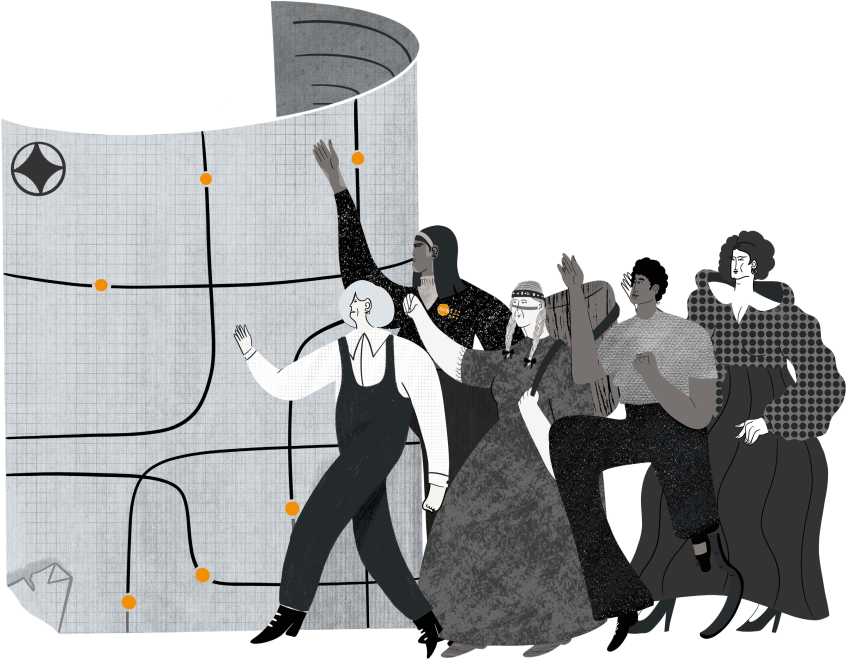
Strategic Plan 2022-2025
Acceleration Transformation Reaching the furthest behind
It invites stakeholders worldwide to join UNFPA on its journey to achieve access to sexual and reproductive health for all, realise reproductive rights and accelerate the implementation of the Programme of Action of the International Conference on Population and Development (ICPD). With the 2030 deadline looming to achieve the three transformative results – ending the unmet need for family planning, ending preventable maternal deaths and ending gender-based violence and harmful practices – the pressure is on us to make major strides in a short time.
Our commitment to achieving the three transformative results by 2030 remains the same, but our ways of achieving them will be dramatically transformed in light of global changes including “megatrends” that have changed the conditions under which we operate.
The new strategic plan reflects a changing world, and as we accelerate our efforts, transform our programmes, and motivate new partners we will prioritize the needs of people left furthest behind – particularly those living in poverty or with disabilities, people of African descent or from indigenous communities, LGBTQI+ people and the most vulnerable women and girls. And these results cannot be achieved without an increased focus on the rights and inclusive participation of women, adolescents and youth as agents of change.
the world now
Shifts in climate, demography, inequality and technology are reshaping the world as never before. Maternal deaths remain high – with one-half occurring in humanitarian settings – while declines have plateaued over the past years. Young people lack access to sexuality education. 200 million people in developing regions who want to prevent pregnancy are not using modern contraceptives. Almost 1 in 3 women have been subjected to physical or sexual violence. Others experience infertility, unsafe abortion and lack of comprehensive post-abortion care, female genital mutilation, obstetric fistula, HIV and AIDS, child marriage and more.
the world now
People in need of humanitarian assistance swelled from 137 million in 2017 to 235 million in 2021. Falling fertility and population ageing in some countries stands in stark contrast to emerging youth populations in others. And while recent trends show progress in the reduction of global poverty, economic forces are allocating unprecedented prosperity to a small minority, leaving vast numbers behind and widening the gap between rich and poor.
Raging conflicts across the globe – from the famine, floods, fires and extreme heat of climate change to the effects of the COVID-19 pandemic – continue to disrupt, threaten and even reverse hard won development gains.
the future
UNFPA dreams of a future where there is equality for everyone, where the rights and choices of people are protected and respected, and where no one is left behind. A future where young people grow up with easy access to information and services for their sexual and reproductive health, and couples and individuals can choose if, when and how many children they want. A future where girls and women can complete and excel in their education, earn equal income, and become agents of change in their communities. Today, greater numbers of women and adolescent girls in developing countries have access to modern contraceptives, are surviving pregnancy and childbirth, and are living lives free from gender-based violence. Our world is nearer than ever to achieving the goal of sexual and reproductive health and rights for all.
the strategic plan
Every step of the way, UNFPA strives to find solutions to the problems that humanity faces today. Working along critical pathways, the action will accelerate the fulfilment of unmet needs for family planning, ending preventable maternal deaths, and ending gender-based violence and harmful practices. The transformational journey mapped out in the UNFPA Strategic Plan 2022–2025 leads to 2030 and the achievement of universal access to sexual and reproductive health and reproductive rights. Emerging trends inform the plan, new and expanded priorities add to longstanding commitments, and “how we work” is changing. Yet every step continues to be guided by the ICPD Programme of Action and the 2030 Sustainable Development Goals. We have already made good progress, but there are many challenges ahead and we are ready to do what it takes to reach the mountaintop.
Leaving no room for discrimination or exclusion
This transformative journey includes people left furthest behind. Gender, age, culture, ethnicity, race, language, religion, disability and location are factors that can contribute to vulnerability in key populations, as well as socioeconomic conditions, migration, asylum, refugee and displacement status, and HIV and AIDS. Underlying structural inequalities, social and cultural barriers, gaps and intersectional vulnerability are considered.


